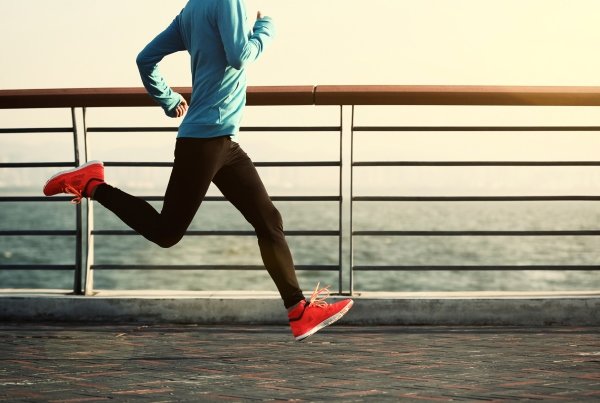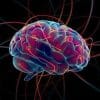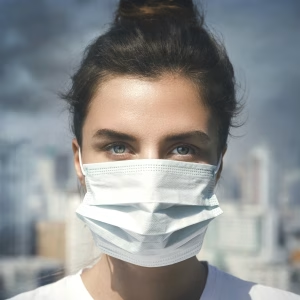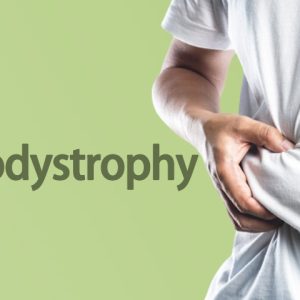
خواب، تغذیه، حرکت: سهگانه نجاتبخش برای بدن فردا
بازنگری علمی و زیستی در اصول فراموششدهی سبک زندگی مدرن
—
مقدمه: درمان در بازگشت به سادگی نهفته است
در عصری که تکنولوژی به سرعت در حال تغییر دادن چهره پزشکی است، هنوز سه عنصر بیادعا باقی ماندهاند که بیشتر از داروها، عملهای جراحی و حتی ژنتیک در سلامت انسان نقش دارند: خواب، تغذیه و حرکت.
این سه، ستونهای طلایی سبک زندگیاند؛ اما در دنیای پرشتاب امروز، با بیتوجهی عجیبی مواجهاند. مقاله حاضر به بررسی علمی، زیستی، روانشناختی و آیندهپژوهانهی این سهگانه میپردازد؛ سفری از مغز تا میتوکندری، از قلب تا ژنها.

—
بخش اول: خواب – بازسازی بدن در خاموشی
الف) فیزیولوژی خواب: پیچیدهتر از آنچه میپنداریم
خواب، یک توقف نیست، بلکه یک بازسازی فعالانه است.
در مراحل مختلف خواب (NREM و REM)، مغز و بدن با فعالیتی حیرتانگیز مشغول تعمیرات اساسیاند:
سیستم گلنفاتیک مغزی در خواب فعال میشود و سموم عصبی را پاک میکند.
هورمون رشد عمدتاً در خواب عمیق ترشح میشود.
تحکیم حافظه و حذف خاطرات نامربوط، در REM صورت میگیرد.
ب) پیامدهای کمخوابی مزمن
افزایش خطر بیماریهای قلبی، دیابت، چاقی و آلزایمر
اختلال در تنظیم هورمونهای متابولیکی مثل لپتین و گرلین
کاهش کارایی سیستم ایمنی
اختلال در عملکرد شناختی، تصمیمگیری، خلاقیت و خلقوخو

—
بخش دوم: تغذیه – کد ژنتیکی سلامت یا بیماری؟
الف) تغذیه اپیژنتیک: غذا و بیان ژنها
مواد غذایی تنها منبع انرژی نیستند؛ بلکه پیامرسانهای بیوشیمیاییاند که روی بیان ژنها اثر دارند. مطالعات اپیژنتیکی نشان دادهاند که:
ترکیباتی مثل کورکومین (زردچوبه) و رزوراترول (انگور قرمز) روی سوییچهای ژنی اثرگذارند.
رژیم غذایی ضدالتهاب، به کاهش بیان ژنهای مرتبط با سرطان و التهاب کمک میکند.
ب) تغذیه و محور روده–مغز
روده دارای بیش از ۵۰۰ میلیون نورون و هزاران گونه باکتری مفید است.
باکتریهای مفید، تولیدکننده سروتونین، GABA و دوپامین هستند.
سوءتغذیه یا مصرف بیش از حد غذاهای فرآوریشده، تعادل میکروبیوتا را بههم زده و با بیماریهایی نظیر افسردگی، اوتیسم و سندرم روده تحریکپذیر در ارتباط است.
—
بخش سوم: حرکت – زیست با جریان انرژی
الف) فیزیولوژی ورزش: بازنویسی زیستی بدن
ورزش اثراتی فراتر از عضلهسازی دارد:
افزایش BDNF و نورونزایی
کاهش CRP و سایر مارکرهای التهابی
بهبود حساسیت به انسولین و تنظیم گلوکز خون
تسهیل خواب و ترشح ملاتونین
ب) کمتحرکی؛ قاتل خاموش مدرن
مطالعات نشان میدهد هر ۲ ساعت نشستن مداوم، خطر مرگ را تا ۸٪ افزایش میدهد.
حتی ورزشکاران حرفهای هم اگر بقیه روز بیتحرک باشند، در معرض بیماریاند. راهحل؟ فعالیت بدنی مستمر روزانه، نه فقط ورزش شدید گاهبهگاه.
—
بخش چهارم: همافزایی سهگانه
این سه رکن بهصورت سینرژیک عمل میکنند:
خواب کافی، اشتها و انتخابهای غذایی را تنظیم میکند.
تغذیه سالم، کیفیت خواب را بهبود میدهد و انرژی ورزش را تأمین میکند.
ورزش، کیفیت خواب را افزایش و استرس را کاهش میدهد.
سبک زندگی سالم، یک سیستم بسته و هوشمند است. کوچکترین اختلال در یک بخش، سایر بخشها را هم تحت تأثیر قرار میدهد.
—
بخش پنجم: آیندهپژوهی سلامت – پزشک آینده خودت خواهی بود
پزشکی مدرن بهسمت پزشکی فردمحور، پیشبینیگر و پیشگیرانه (P4 Medicine) حرکت میکند.
در این مدل، دادههای سبک زندگی – مانند خواب، تغذیه و حرکت – بهوسیله ابزارهایی مثل ساعتهای هوشمند جمعآوری شده و تحلیل میشوند.
هوش مصنوعی میتواند:
اختلالات خواب را زودتر تشخیص دهد
الگوهای تغذیهای ناصحیح را هشدار دهد
میزان تحرک شما را با الگوی بیماریهای ژنتیکیتان تطبیق دهد
—
نتیجهگیری نهایی: درمان در دست ماست
مهمترین داروهایی که بدن به آن نیاز دارد، نسخه نیستند؛ بلکه انتخابهایی روزمرهاند.
با تنظیم خواب، توجه به کیفیت تغذیه، و حفظ تحرک بدنی، میتوان مسیر زیستی بدن را تغییر داد.
بدن، هوشمند است؛ فقط باید به آن اجازه بازسازی بدهیم.
—
منابع علمی (بهروز و معتبر):
1. Walker, M. (2017). Why We Sleep: Unlocking the Power of Sleep and Dreams.
2. Gómez-Pinilla, F. (2008). Brain foods: the effects of nutrients on brain function. Nature Reviews Neuroscience, 9(7), 568–578.
3. Hotamisligil, G. S. (2006). Inflammation and metabolic disorders. Nature, 444(7121), 860–867.
4. Peterson, M. D., et al. (2016). Sedentary behavior and mortality. American Journal of Preventive Medicine, 50(2), 234–240.
5. Valdes, A. M., et al. (2018). Role of the gut microbiota in nutrition and health. BMJ, 361, k2179.
—
Sleep, Nutrition, Movement: The Vital Triad for Tomorrow’s Body
A Scientific Deep-Dive into the Forgotten Fundamentals of Modern Life
—
Introduction: Healing Lies in Simplicity
In an era where medicine is racing toward advanced technologies—genomics, AI diagnostics, personalized therapies—three humble elements still surpass most interventions in preserving human health: sleep, nutrition, and movement.
This golden triad forms the foundation of lifestyle medicine, yet it is paradoxically the most neglected in modern life. This article explores these three pillars through the lenses of physiology, neuroscience, psychology, and future healthcare innovations.
 —
—
Part I: Sleep – Active Restoration Behind Closed Eyes
a) The Physiology of Sleep: More Complex Than We Think
Sleep isn’t passive downtime; it is a dynamic restoration phase. During sleep cycles (especially deep NREM and REM phases), the body and brain actively engage in high-priority repair mechanisms:
The glymphatic system clears toxic waste like beta-amyloid from the brain.
Growth hormone is secreted predominantly during deep sleep, aiding cellular repair.
Memory consolidation and emotional processing are orchestrated during REM sleep.
b) The Consequences of Chronic Sleep Deprivation
Elevated risk of cardiovascular disease, obesity, diabetes, Alzheimer’s
Disruption in metabolic hormones like leptin and ghrelin
Impaired immune function and increased inflammation
Decreased cognitive performance, emotional regulation, and creativity
—
Part II: Nutrition – Programming Genes with Food
a) Epigenetic Nutrition: Food as a Genetic Switch
Food acts not only as fuel but also as epigenetic code.
Nutrients and phytochemicals can turn genes on or off:
Curcumin and resveratrol influence gene expression related to inflammation and cancer suppression.
Anti-inflammatory diets downregulate pro-inflammatory pathways at the genetic level.
b) The Gut-Brain Axis and Mental Health
The gut houses over 500 million neurons and trillions of microbes.
Its health is critical for mental wellness:
Beneficial gut bacteria synthesize neurotransmitters like serotonin, GABA, and dopamine.
Dysbiosis is now linked to depression, autism, anxiety, and IBS.
—
Part III: Movement – Rewiring the Body Through Energy
a) Exercise Physiology: Beyond Fitness
Exercise triggers profound biochemical and neurological changes:
Increases BDNF (brain-derived neurotrophic factor) for neurogenesis
Reduces CRP and systemic inflammation
Improves insulin sensitivity and glucose uptake
Regulates sleep cycles and stress hormones like cortisol and melatonin
b) The Silent Killer: Inactivity
Studies show that every two hours of prolonged sitting increases mortality risk by up to 8%, regardless of workout frequency.
The key is daily mobility, not just episodic exercise.
 —
—
Part IV: Synergy – When the Trio Becomes One System
The three pillars do not act in isolation—they interact synergistically:
Adequate sleep improves hormonal balance and eating habits.
Proper nutrition fuels quality sleep and physical endurance.
Physical activity enhances sleep quality and metabolic flexibility.
Health is not a linear model but a dynamic feedback loop. Disruption in one aspect destabilizes the others.
—
Part V: The Future of Health – You as Your Own Doctor
Medicine is shifting toward P4 healthcare: Predictive, Preventive, Personalized, and Participatory.
Lifestyle data—captured via wearable tech—is central to this shift:
Smartwatches analyze sleep stages, activity levels, and dietary input
AI interprets patterns to warn about health risks before symptoms arise
Personal health dashboards will become standard, powered by real-time lifestyle analytics
—
Conclusion: The Real Medicine is Within Reach
The most powerful prescriptions often aren’t drugs—they are daily decisions.
By mastering sleep, choosing food wisely, and moving with intent, we rewrite the biological destiny of our bodies.
Let’s return to the roots—not as a regression, but as an evolution.
—
Scientific References (APA Style)
1. Walker, M. (2017). Why We Sleep: Unlocking the Power of Sleep and Dreams. Scribner.
2. Gómez-Pinilla, F. (2008). Brain foods: the effects of nutrients on brain function. Nature Reviews Neuroscience, 9(7), 568–578.
3. Hotamisligil, G. S. (2006). Inflammation and metabolic disorders. Nature, 444(7121), 860–867.
4. Peterson, M. D., et al. (2016). Sedentary behavior and mortality. American Journal of Preventive Medicine, 50(2), 234–240.
5. Valdes, A. M., et al. (2018). Role of the gut microbiota in nutrition and health. BMJ, 361, k2179.
—
 دهدارو | خرید آنلاین از داروخانه به سادگی هر چه تمام
دهدارو | خرید آنلاین از داروخانه به سادگی هر چه تمام









